NATIVITY
Rosa-Johan Uddoh
- Presented by — Workplace
- Rosa-Johan Uddoh, NATIVITY, 2022, performance at Workplace, performed by Rose-Johan Uddoh with Adeola Yemitan and Ebunoluwa Sodipo, for Performance Exchange 2022. Image: Damian Griffiths.
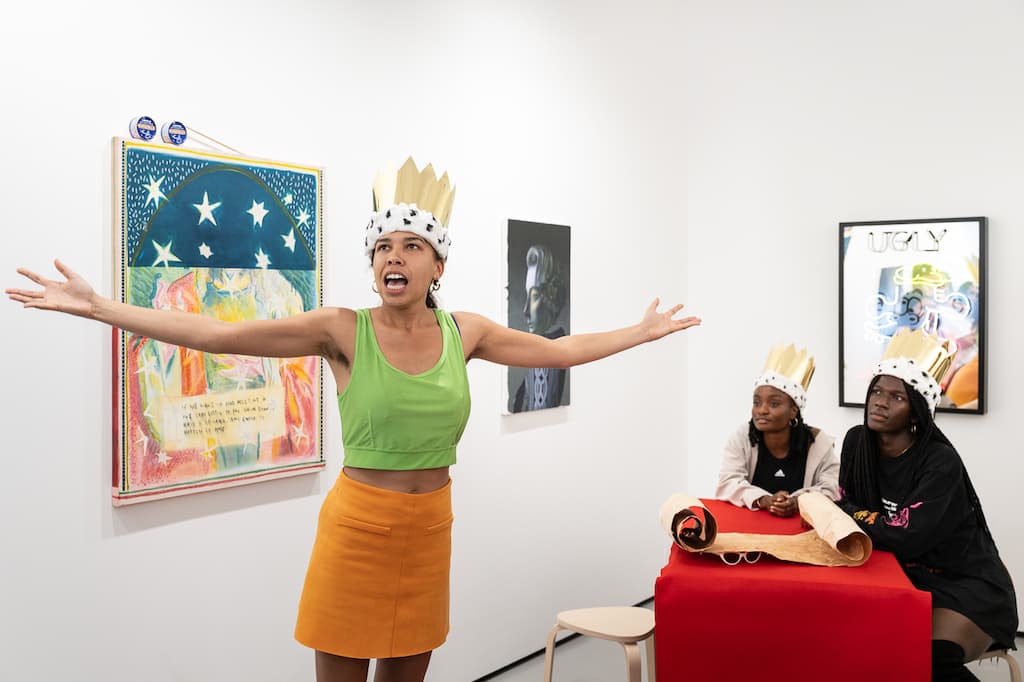
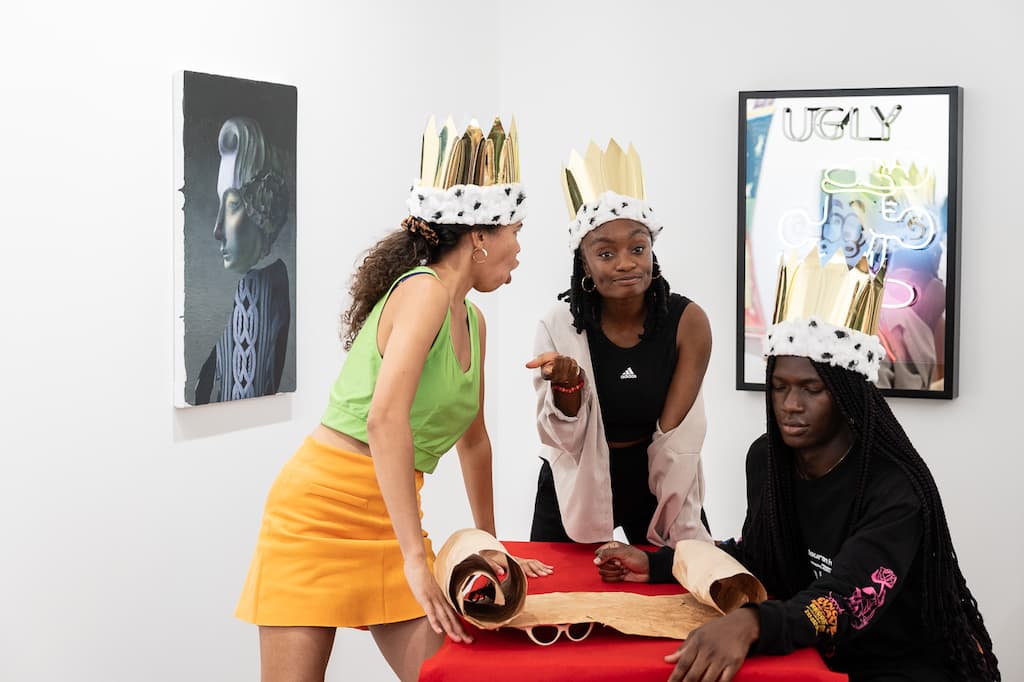
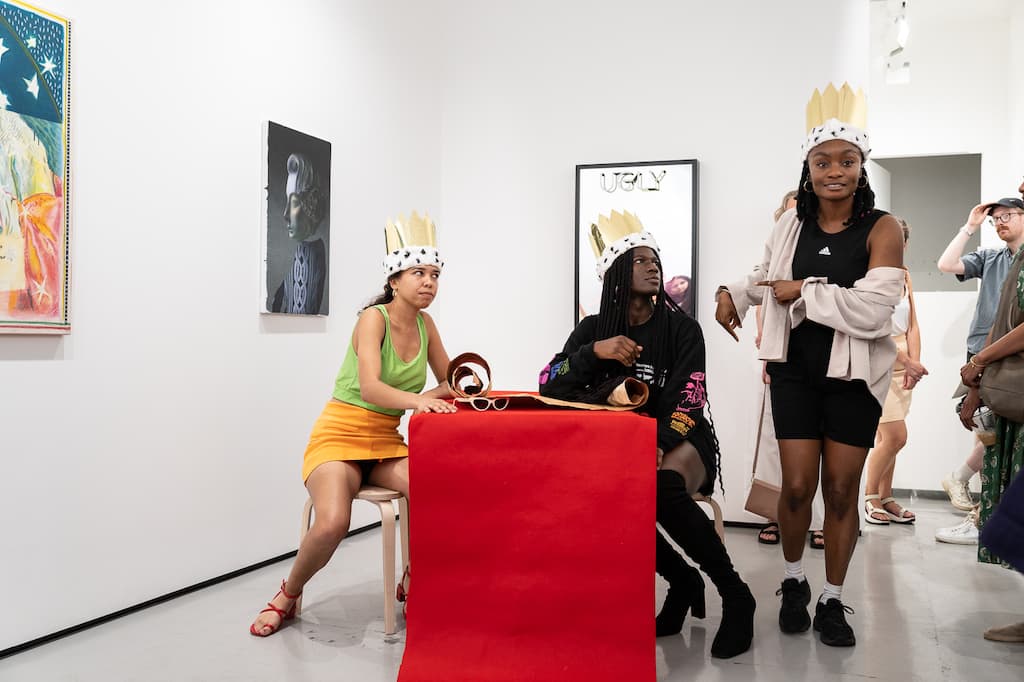
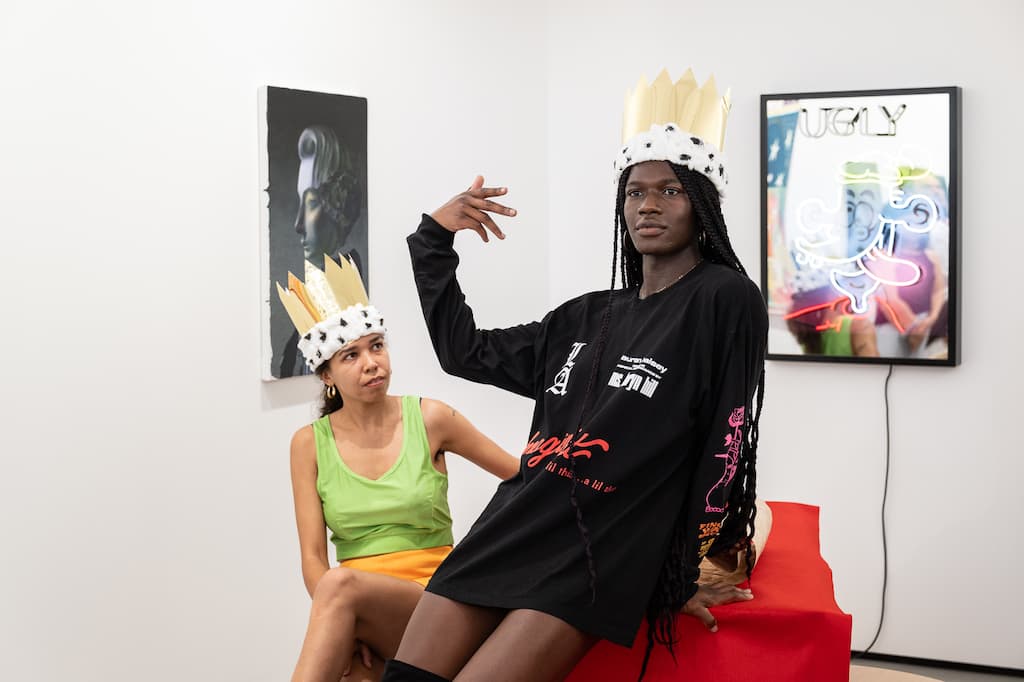
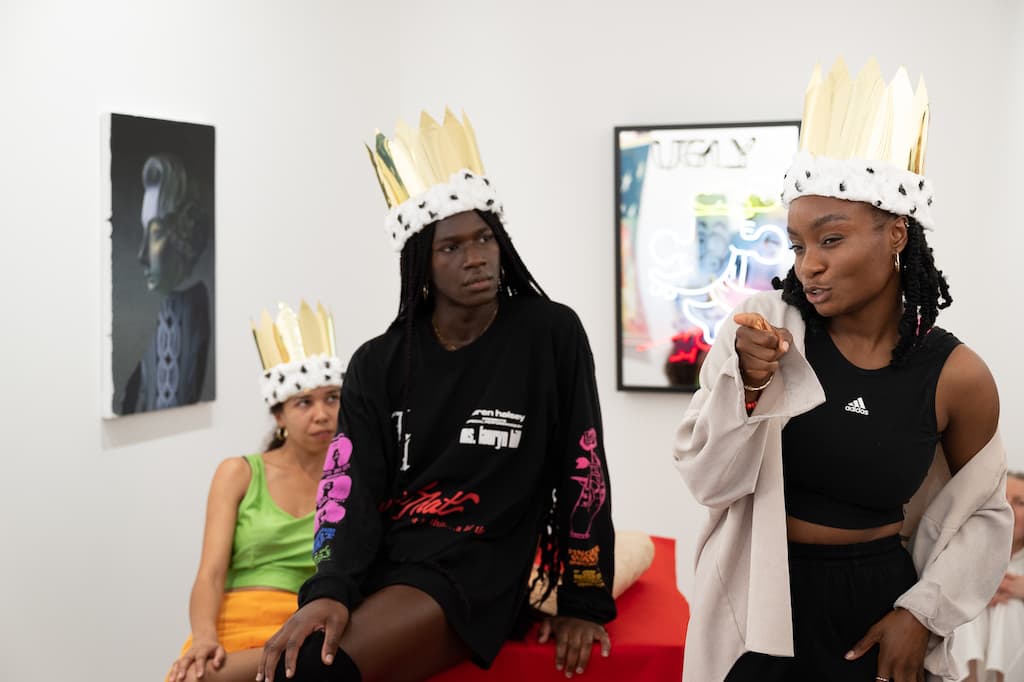
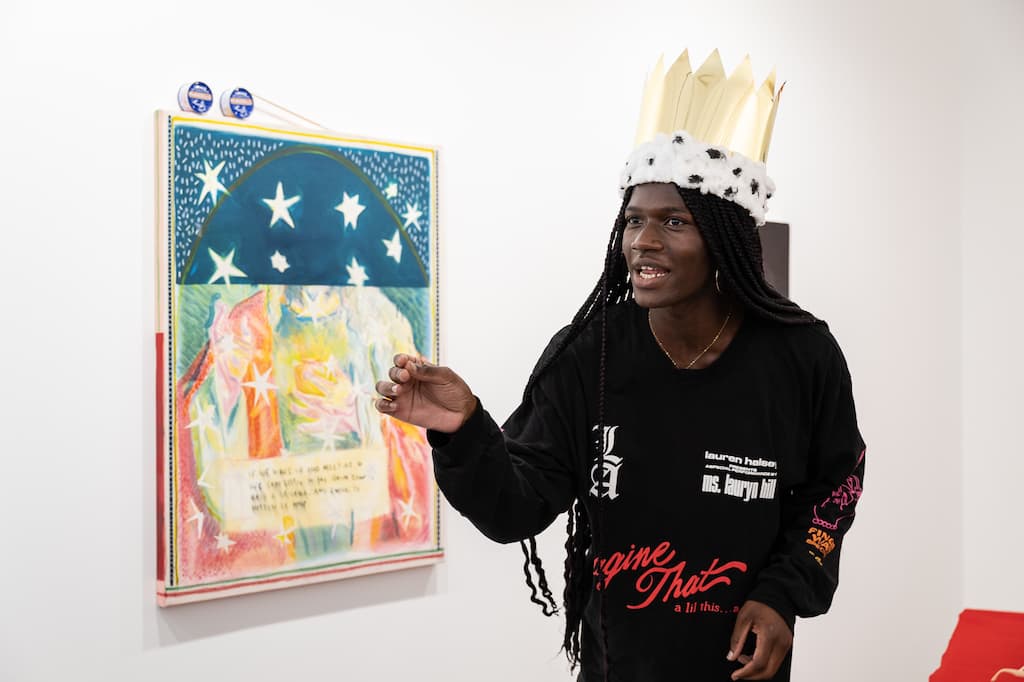
Summary
NATIVITY is a short epic tale about Black performance in the West by three kings who’ve seen it all. This new performance continues Uddoh’s practice-based research into characters in popular culture and their effects on self-formation.
Performance Description
NATIVITY charts one of the most frequent and historic representations of a Black character by White people since the 15th Century — that of the character ‘Balthazar’ — the ‘African King’ who, according to Christian tradition, visited the baby Jesus at his birth. Balthazar was a vital part of one of the most popular motifs in Western art history: the Nativity, and always the best dressed. You might recognise him today from Christmas cards and school Nativity plays still seemingly mandatory part of UK state school curriculum.
In this way the performance begins at the ‘nativity’ of Blackness — the ‘advent’ of the construction of Blackness by the white imagination at the moment of their encounter with darker skinned people. Each chapter in the text is inspired by the artist’s archival research into Black presences in Europe, as well as personal experiences of being asked to perform ‘blackness’ in both theatrical and everyday settings for a white gaze. This is a performance about how performance produces identity.
Outline
The performance is to be performed at a gallery or art museum or institution, amongst existing art works. The performance consists of a script read aloud by three performers, each as one of three ‘Balthazars’.
At the start of the performance, the red carpet is rolled out by the performer and used to demarcate the space for the intervention to happen.
Most of the script is memorised, but some is read from the tea-stained scroll. A written script, video and photographic documentation will be provided for details of sequence and movement.
Conditions of Performance
The performance should be performed as directed on script.
This work should be performed by three Black performers. They can be of any age and gender, providing they are able to read the script. They do not need to be trained actors or professional actors: though they should feel confident to memorise parts of the script and read aloud.
One of the performers should be the artist Rosa-Johan Uddoh where possible, but also propositions for other performers are allowable in adherence with the guidelines set out in this section.
The performers should rehearse in advance a number of times so they feel comfortable with and that budget allows for. Any performer should be paid fairly for their participation. A minimum fee of £250 per day for rehearsals and performances (this is a 2022 rate, to be adjusted for inflation over time).
Video documentation will be provided as a guide for movement direction, but this can be built upon by the performers according to their particular skills and the site in which the performance is performed.
The performer should be offered adequate time and space for rehearsal and access to archival material of the original performance. The name of the performers must be credited on any and all print and online materials relating to a re-staging of the Performance at all times.
Performers should wear crowns (provided) and their favourite outfits (defined by the performers).
If necessary, the performer’s voice may be amplified, according to the needs of the specific space.
Live captioning or printed transcripts should be made available for accessibility, for those audience members who require it.
Documentation
Each staging of this work should be photographed, with at least one commemorating photograph sent to the artist as a souvenir for her archive of Black performance.
Script
Equipment
-
The following materials will be provided upon acquisition
- A script
- Three crowns for the performers to wear
- A ‘red carpet’, 0.6m × 7.5m
- One tea-stained scroll for read element, approx. 0.3m × 1m
- One set of battery operated multicoloured Christmas lights with pulsating option
- One ‘amniotic sac’ — a thin, iridescent sheet of translucent plastic
-
The following additional materials should be provided for the performance
- A table and three stools for performers to sit around
-
Additional information
- The three crowns for the performers to wear and the tea-stained scroll are designed by the artist: should those need replacing due to wear and tear, the artist will provide a guideline on how to remake them.
- All other props, including a red carpet, one set of battery operated multicolored Christmas lights with pulsating option and one amniotic sac — a thin, iridescent sheet of translucent plastic can be replaced if damaged by purchasing the closest items that can be found in the location where the performance will take place.